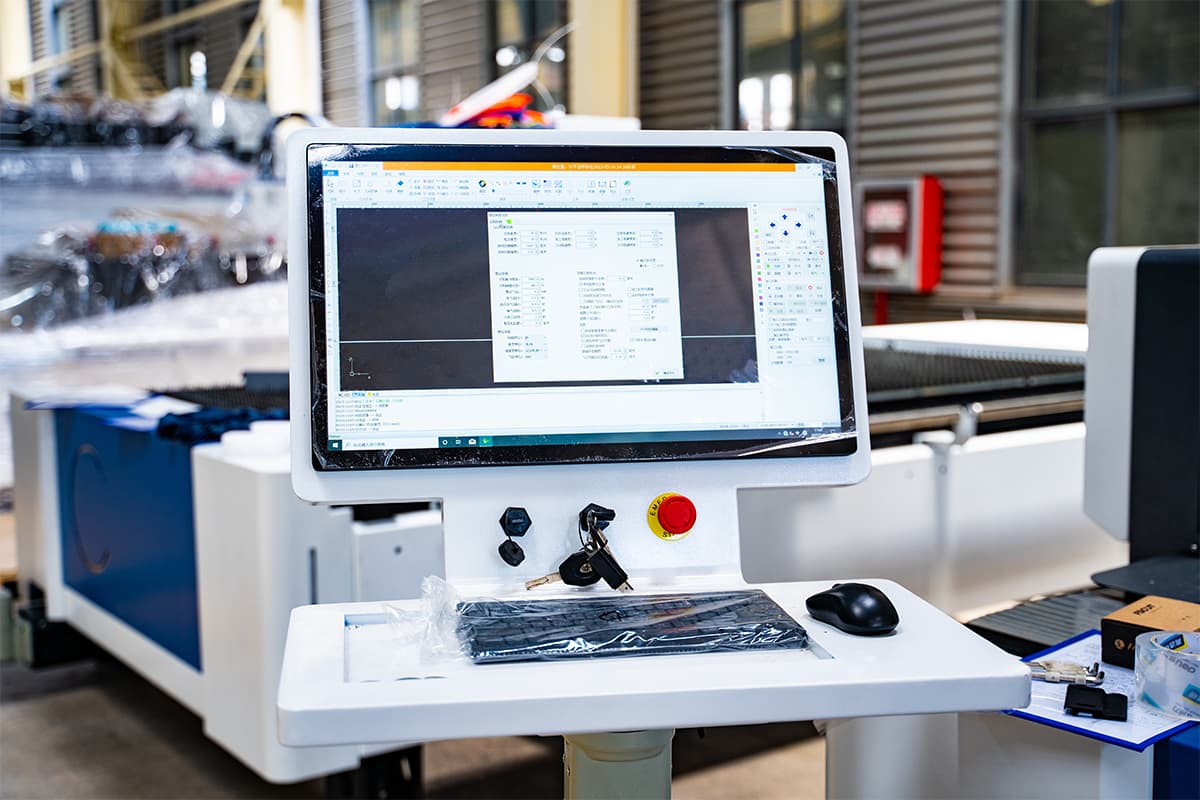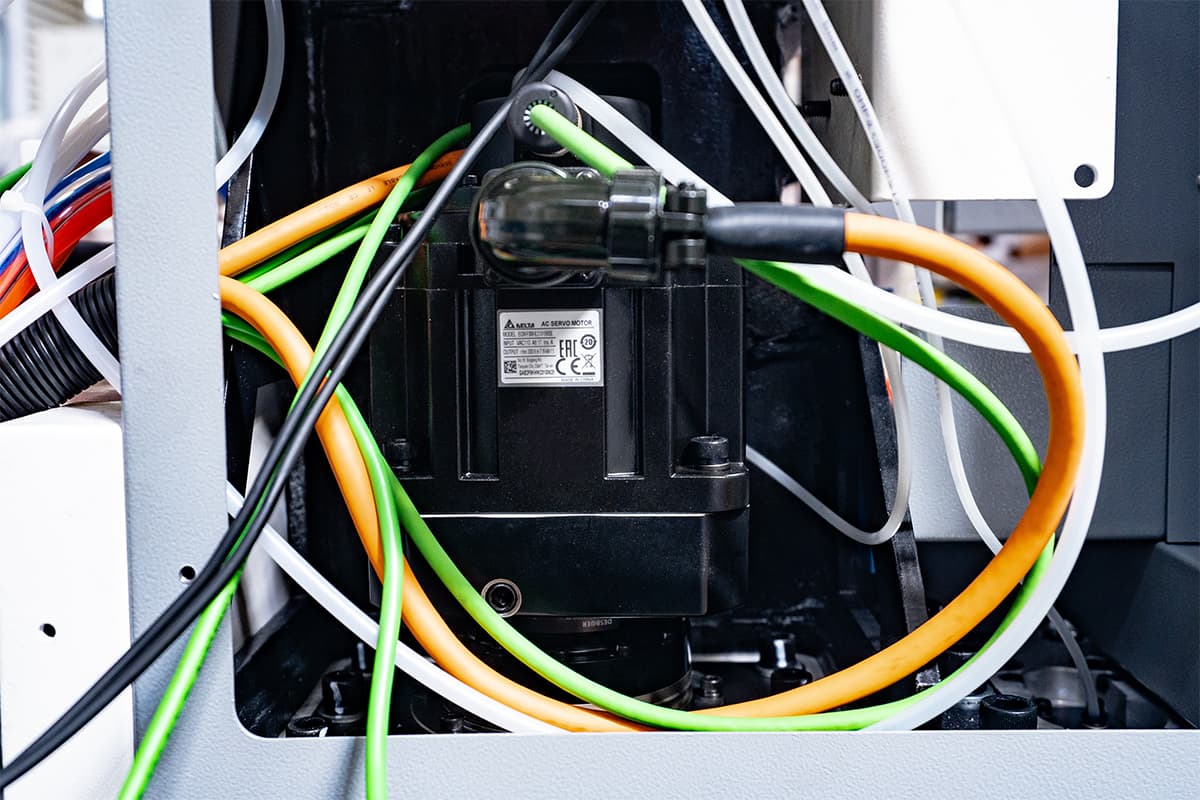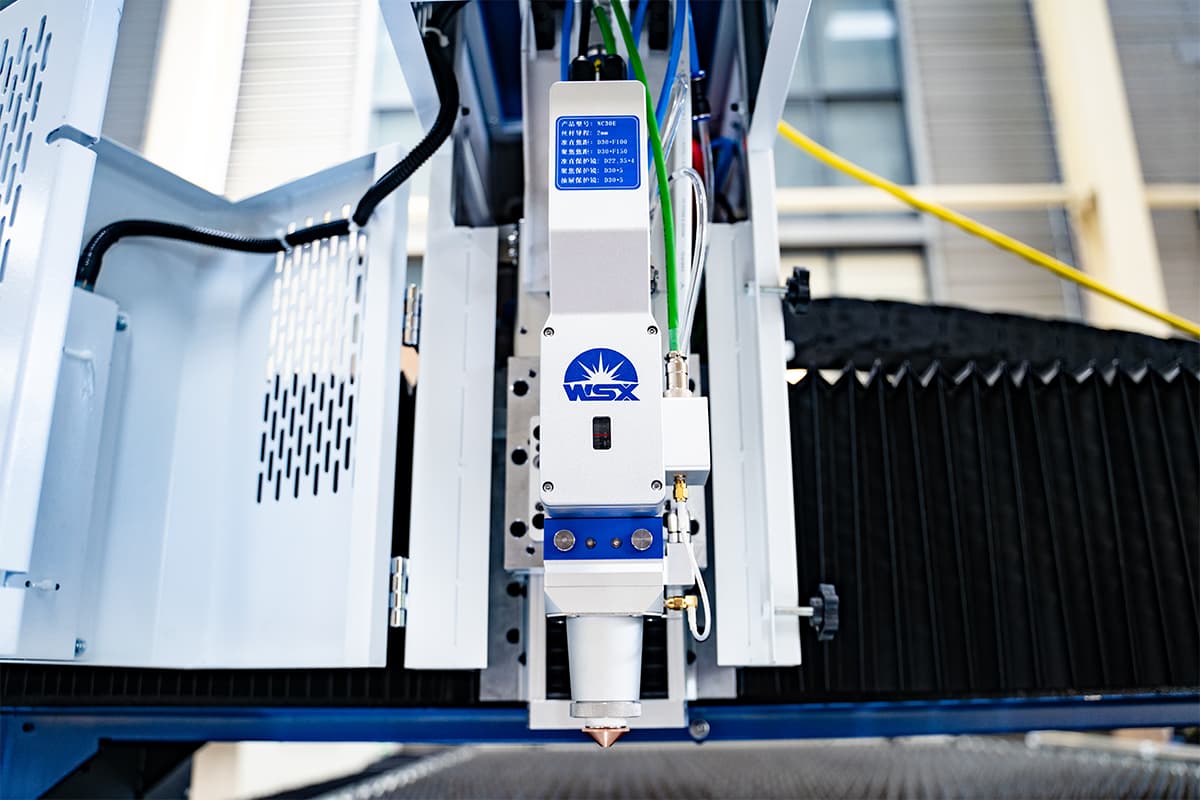The laser cutting machine is a kind of machine that utilizes high-power laser beams to cut the workpiece accurately. Controlled by the computer, laser beams can focus on a small area of the surface to melt and evaporate the materials and then use high-pressure gases to blow them off. In this way, the cutting is finished. Laser cutters, by virtue of high speed, accuracy and efficiency, are widely used in manufacturing. Personal laser cutting machines offer unprecedented convenience and creative possibilities for DIY enthusiasts and small-scale manufacturers. As technology develops, DIY laser cutters serve as an economical solution. Users can choose and make their laser cutting machines, which not only lowers the entry threshold but enables individuals and small companies to innovate and produce by the machine. Generally speaking, laser cutting machines by virtue of their high accuracy and efficiency and wide application secure a place in modern manufacturing. The invention of personal laser cutters brings new opportunities for laser cutter hobbyists and small enterprises. The economic laser cutting machines emerge as a powerful tool for innovation and production. Before my introduction, I’d like to share a video with you to have an intuitive learning so as to digest the abstract concepts. After finishing the video, let's dig deeper to learn something professional. A laser cutting machine utilizes high-density power to focus on the surface of the workpiece. So the temperature of the surface surges to the melt and evaporate points. In this way, the cutting is finished. During cutting, the cutting heads controlled by CNC system will move along with the designed pathes, and at the same time, the cutting gases will spray out from the nozzle to blow the melt out so to form the cutting silts. Laser cutters produce small heat-affected areas, narrow silts, and high-quality cuts, which is a kind of contactless cutting method. Laser cutters can be divided into different categories according to different criteria. In this article, we mainly discuss the aspects of laser type, structure, cutting material, and laser power. 1. Classified by laser type: (1) CO2 laser cutting machines: They use CO2 gases as a laser medium and generate lasers through electric current excitation. CO2 laser cutters are suitable for non-metal materials, like wood, plastic, and acrylic, and they also cut metals. Their wavelengths are about 10.6μm. (2) Fiber laser cutting machines: They use optical fibers doped with rare earth elements as the laser medium. Lasers are generated through diode pumping. Fibe laser cutters are mainly used for metal cutting, such as carbon steel, stainless steel and aluminium alloy. The wavelength of fiber lasers is 1.06μm, possessing relatively high electricity-light transmission and cutting speed. (3) YAG laser cutting machines: They use a solid-state laser source, with its laser medium typically being neodymium-doped yttrium aluminum garnet (Nd: YAG). This machine is primarily used for cutting metal materials and is especially suitable for processing thinner metal sheets. 2. Classified by structure: (1) Gantry laser cutting machine: During cutting, the laser is fixed while the workpiece is moving. They are suitable for large materials or heavy industry. (2) Cantilever laser cutting machine: In this kind of machine, the laser head is fixed at one end, and the machine is suitable for small or medium-sized workpieces. (3) Robotic arm laser cutting machine: The machine uses a robotic arm to carry out laser cutting. It is suitable for complex or three-dimensional cutting. 3. Classified by cutting materials: (1) Metal laser cutting machine: They are suitable for cutting multiple metals, such as stainless steel and carbon steel. (2) Non-metal laser cutting machine: They cut wood, plastic, paper, and other non-metals. 4. Classified by laser power: (1) Low Power Laser Cutting Machine: Low Power Laser Cutting Machines are suitable for thin materials or cutting applications with low requirements. (2) Medium Power Laser Cutting Machine: Ideal machines for cutting medium-thickness materials, they balance cutting speed and equipment cost. (3) High Power Laser Cutting Machine: They are used for thick materials and can meet the demands of mass batches of production. 1. Laser source: As the core components of a laser cutting machine, the laser source generates lasers according to different mediums. CO2 laser cutting machines utilize CO2 gases; fiber laser cutting machines use doped fiber; crystal laser cutting machines use d: YAG and Nd: YVO 2. Control system: As the mind of a laser cutting machine, the control system accepts the cutting instructions and patterns inputted by the user and controls the output of the laser source and the movement of the motion system to achieve accurate cutting. The control system includes a CNC control system and dedicated software. 3. Motion system: Motion system includes servo motor, guide rails, transmission devices, etc. It drives the cutting head to move along the designed paths. The accuracy and stability of the motion system directly decide the cutting quality and efficiency. 4. Cutting bed: As the work area for laser cutting machines, the cutting bed is used to dispose of and fix the workpiece. The size of the cutting bed should take many factors into consideration, such as the size and weight of the material and the stability during cutting. Based on the above, the type and key components of a laser cutting machine decide its performance, application, and cutting quality. Therefore, suitable machines and an understanding of their components fulfill their roles in high-accuracy and high-quality cutting. When planning to make your own DIY laser cutters, you should consider many elements, including clear demands, calculated budgets, laser source and power, cutting area, and the size of the machine. First of all, Clarify your cutting needs. It’s the first step. Which kind of material you are going to cut and its thickness are the questions that should be solved. In addition, the cutting accuracy and speed of the desired machine are important. Based on these requirements, a reasonable budget range is decided, which should incorporate necessary components, materials, and extra tools or software. Three main kinds of DIY laser cutters are gantry, belt-driven, and rack-and-pinion laser cutters. The gantry design structure is stable and suitable for large-scale cutting tasks; the belt drive system has a lower cost, simple installation, and is suitable for lightweight and medium precision work; the gear rack drive offers higher precision and speed, making it suitable for precise cutting. I hope you can select the most suitable type based on your requirements and budgets. Laser source directly decides the cutting performance and costs. Common laser sources include CO2 laser, fiber laser, and diode laser. CO2 laser cutters are suitable for non-metal cutting, fiber laser can handle metal cutting. When choosing a fiber source, you should consider laser power. The higher the power, the stronger the cutting speed and the handling capacity for material thickness. Your selection for laser power and source should be based on main cutting materials and budgets. The size of cutting area decides the physical size of the machine, which also influences the storage location and workspace requirements. So you need to determine the maximum cutting area so as to choose the appropriate machine. Larger cutting area require more powerful laser source to ensure accuracy. According to the above steps, you can plan and design your DIY laser cutting machine systematically to carry out creative production at home or workshop. CO2 laser tubes are the most commonly used light source for laser cutting machines, with a power range generally between 20-180W and a wavelength of 10.6μm. They are suitable for cutting non-metal materials such as wood, acrylic, fabric, etc. CO2 laser tubes have a relatively long lifespan but are large in size and require water cooling. Diode laser modules have developed quickly in recent years, with power reaching 40w and a wavelength of 445-455nm. They are cheaper than CO2 laser tubes, smaller, and can be cooled by air. However, they are only suitable for cutting thin materials, and their speed is also slower than that of CO2 laser tubes. Motors are commonly used as drive devices, capable of precisely controlling the movement of the laser head in the X and Y directions. Reflective mirrors are used to change the transmission direction of CO2 lasers. Common materials include silicon or copper, with a gold-plated surface, achieving a reflectivity of over 99% for 10.6μm wavelength lasers. A focusing lens concentrates the laser beam onto a single point on the surface of the material to be cut, with zinc selenide being a commonly used material. The focal length of the lens generally ranges from 2-5 inches, with an aperture of 18-25mm^3. Diode lasers typically do not require mirrors; only a focusing lens is needed. During the cutting, dust and poisonous gases are generated. So ventilation systems are needed to exhaust the waste gases out to the atmosphere. But you should notice that The exhaust machine’s airflow needs to match the size of the cutting width. Laser cutting machines must be equipped with protective covers so as to avoid lasers damaging eyes and skin. The cover material, such as glass and acrylic, can block the working wavelength's laser. The protection requirements for 455nm blue diode lasers are lower than those for 10.6μm CO2 lasers. All in all, CO2 laser tubes cut faster and are suitable for production batches, but they require higher costs and high stand maintenance. While diode laser modules are cheaper and portable yet limited in cutting performance, so they are suitable for small batches of production and thin material cutting, which are favoured by laser cutting machine hobbyists. Building the machine frame: Assembling the gantry or motion system: Installing the cutting bed: Mounting the laser source: Aligning mirrors and lenses: Connecting water cooling (if applicable): Wiring stepper motors and limit switches: Connecting the laser control board: Setting up the power supply and emergency stop: Installing and configuring control software: Calibrating the laser cutter: Running test cuts: Following the steps I described above, you can make your own laser cutting machine. Isn't it interesting? By following the steps and precautions I have listed, I believe you will gain a deeper understanding of laser cutting machines while learning knowledge about a laser cutting machine. So without further ado, let's get starting and make our own laser cutting machine together. The beginning of this article elaborates on the definition of laser cutting machines, their working principles, and detailed classifications to help you understand this machine and enhance your comprehension of the following content. The main focus of this article is on the preparation of parts and the manufacturing process for making laser cutting machines. I believe you will gain a deeper understanding of how to make a laser cutter after reading my article. Our company, ADH Machine Tool, has abundant scientific knowledge regarding laser cutting machines, and we have highly professional operators. We sell laser cutting machines and machine parts. If you need to make your own laser cutting machine, you can browse through our product page to buy some components. Feel free to contact us if you have any other questions. Download the Infographic With High Resolution We are the factory to produce kinds of tempered glass products,the cake tray is one of them,it can be clear,picture one and also can be silk printing one.The sizes and packages both can be customized according to your request for it.Our factory produce such products for more than ten years and if you are interested in it,welcome to contact me freely for more information,tks. 20cm Diamter Cake Tray,20cm Diamter Cake Stands,20cm Diamter Clear Glass Cake Tray,20cm Diamter Tempered Glass Cake Tray the shahe city of toughened glass factory , https://www.temperedglasszd.comI. Introduction
II. Understanding Laser Cutting Machines
How laser cutters work
Types of laser cutters
Key components (laser source, control system, motion system, cutting bed)


III. Planning Your DIY Laser Cutter
Determine your requirements and budget.
Choose a laser cutter design (gantry, belt-driven, rack-and-pinion)
Select the appropriate laser source and power
Consider the cutting area and machine size.
IV. Gathering Materials and Components
Laser source (CO2 laser tube, diode laser module)
Motion control system
Mirrors and lenses
Safety enclosure and ventilation
V. Step-by-Step Build Process
1. Frame Construction
2. Laser and Optics Setup

3. Electronics and Wiring
4. Software Configuration
VI. Conclusion
